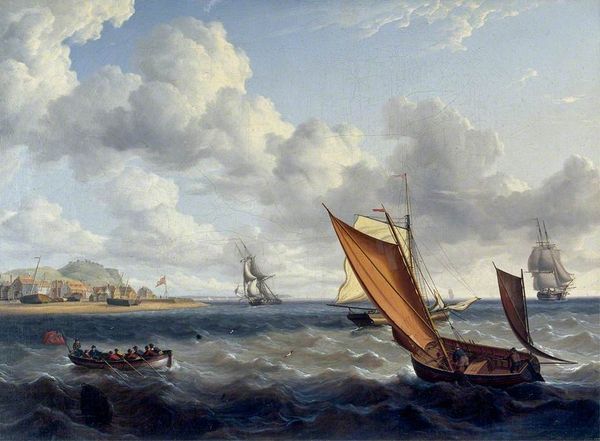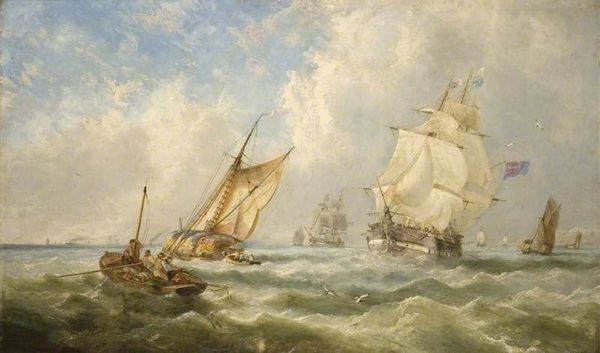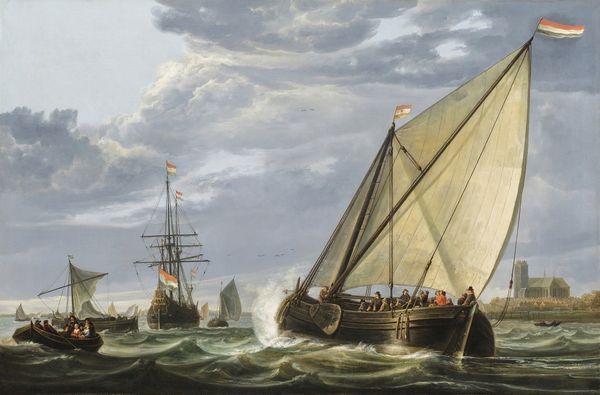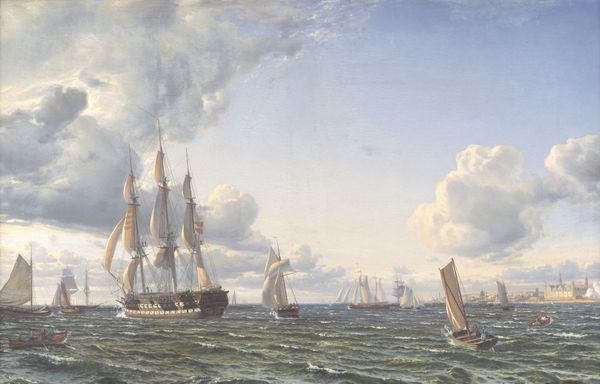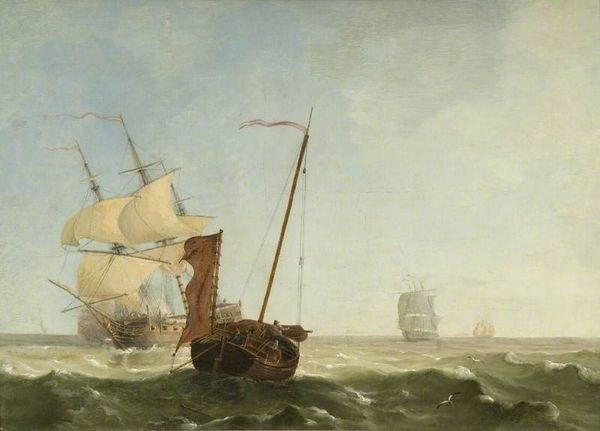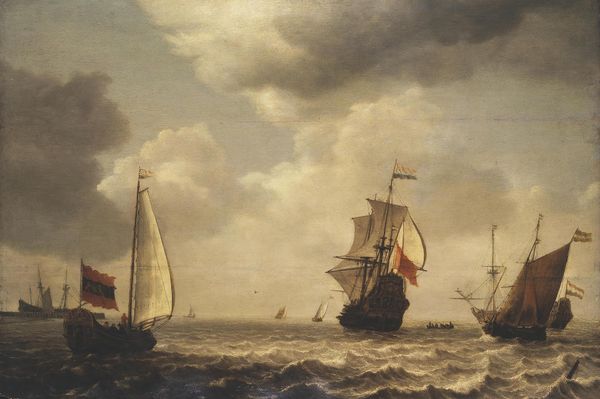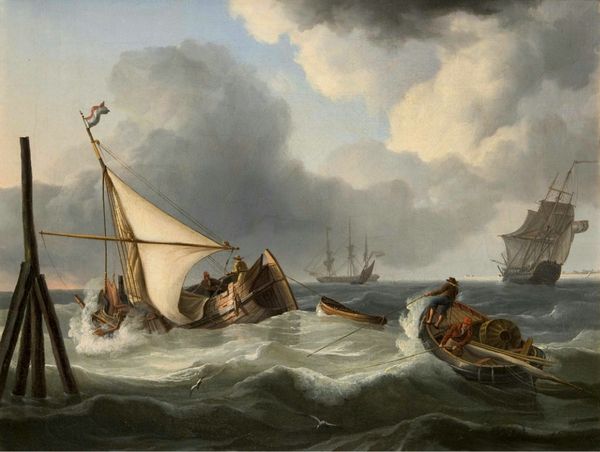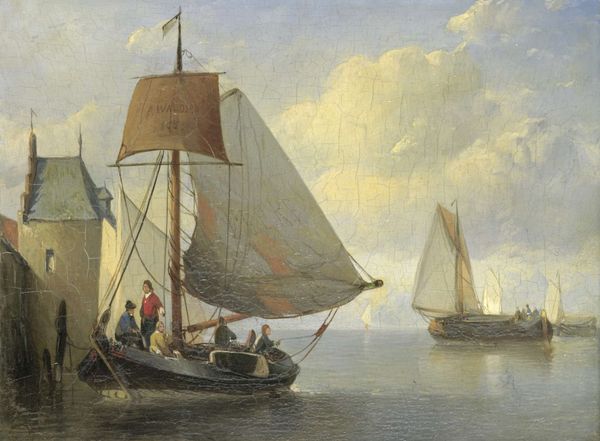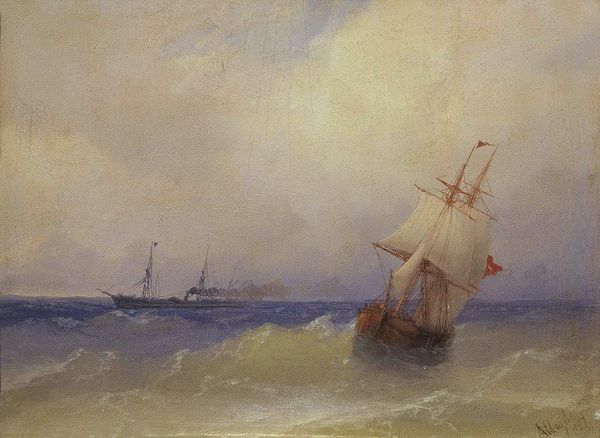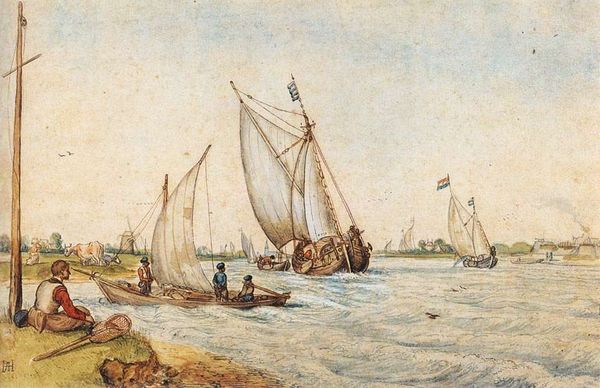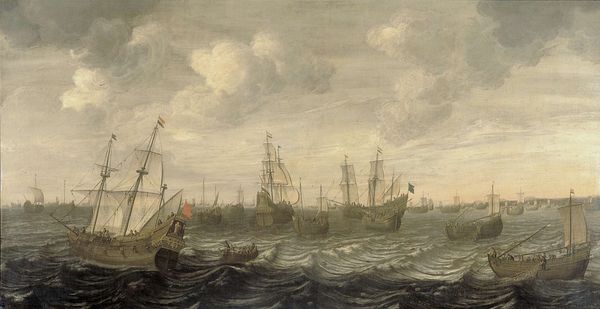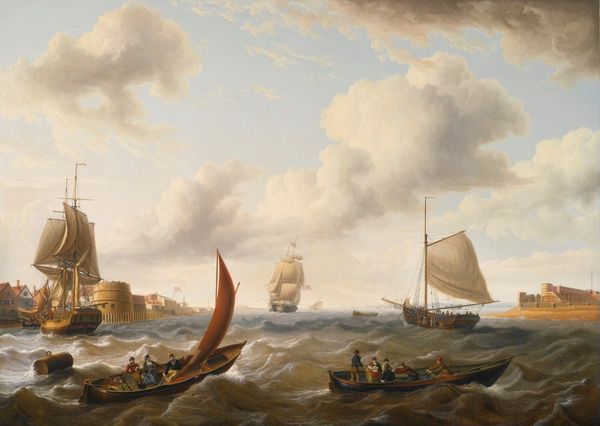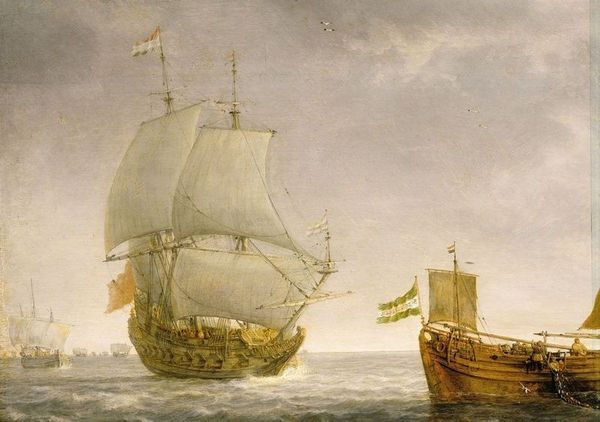
Copyright: Public domain
Editor: Here we have John Wilson Carmichael’s *Off the Dutch Coast*, painted in 1858 using oil on canvas. There's such a strong sense of movement in the waves, it’s really captivating. What do you see in this piece, beyond just ships at sea? Curator: I see more than just a seascape. The painting prompts questions about maritime power, trade, and the relationship between nations in the mid-19th century. These weren't simply vessels for transport, but key elements in global political dynamics. Editor: That's interesting. The Dutch flag is prominently displayed on one of the boats. Does that carry significance beyond just identifying the location? Curator: Absolutely. The Dutch flag at this time signified more than just national identity; it symbolized a vast colonial empire built on maritime trade and, critically, the exploitation of resources and labor across continents. Carmichael, a British artist, paints a scene focused on the Dutch. What narrative might be intentionally, or unintentionally, crafted here? Editor: So, by depicting this scene, Carmichael is potentially commenting on the relationship between Britain and the Netherlands at the time, maybe their rivalry in global trade and colonialism? Curator: Precisely. The romanticized depiction of the scene normalizes these power structures. Were these ships involved in the transportation of enslaved people or resources plundered from colonized lands? The painting invites us to consider who benefits from this seemingly picturesque scene. What is missing or conveniently cropped from view? Editor: I never thought about it that way, I was only considering the aesthetic aspect of the painting, but your analysis definitely gives me a broader perspective on the artwork's meaning. It highlights the connection between art, history, and politics. Curator: Exactly. Art doesn't exist in a vacuum. Examining the historical context and social power structures gives us a richer understanding of the artwork, prompting critical discussions about the past and its echoes in the present.
Comments
No comments
Be the first to comment and join the conversation on the ultimate creative platform.
